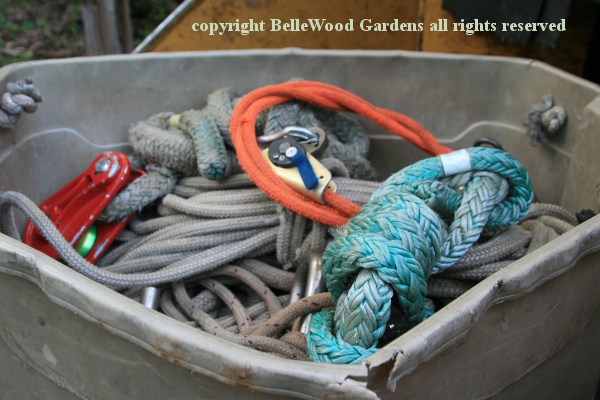
.
If you have any comments, observations, or questions about what you read here, remember you can always Contact Me
All content included on this site such as text, graphics and images is protected by U.S and international copyright law.
The compilation of all content on this site is the exclusive property of the site copyright holder.
What to call someone who works with trees? If the focus is tree health and pruning, they're an arborist. Cutting trees down? Then they're loggers or lumberjacks. And make no mistake, cutting trees down takes skill. Paul is good at this, mostly. But he only does this when he has both feet on the ground while using a chain saw. So there are times when prudence suggests hiring an expert - if the tree is what's called "a widow maker" and is hung up in another tree. If it is leaning over something (like the Forest Deck) which could be smashed on the way down. If - let's just say that knowing when not to do something is the smarter thing to do. Like now. Not that the trees were very large, just tall and awkwardly placed.
A discussion with Mike Grombir of C & M Landscape Service, and we came to an agreement. His crew would remove the three trees near the gazebo, one next to driveway, remove a widow maker on the path down from the lawn to the driveway, and chip the slash. The crew would come in a few days, sometime after they finished a couple of previous jobs. Off we went to the 4-H Fair . . . . and came home to find the truck, huge Vermeer chipper attached, and crew at the top of the driveway, starting work.

You might think that chain saws are a logger's most important tools.
Cannot do without them, but ropes are also critical equipment.
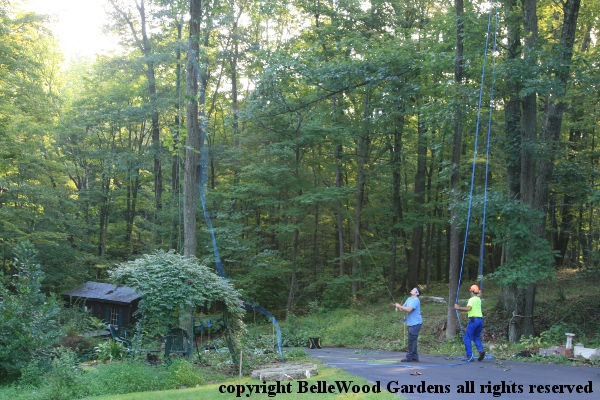
.
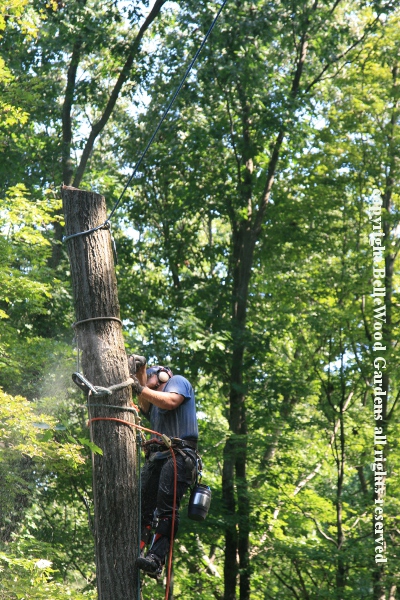
Once the crown is cut and cleared away it is time to start on the trunk.
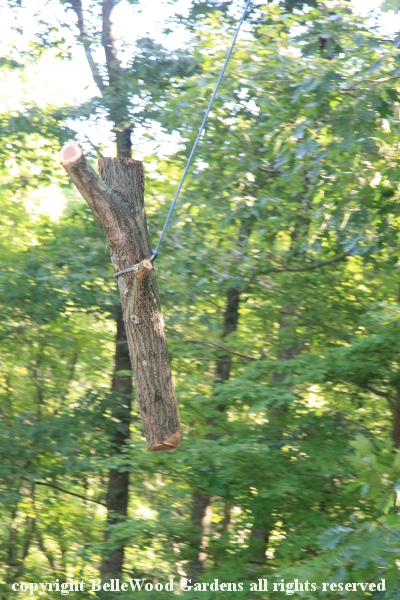
Kirk ropes a section, then cuts it free.
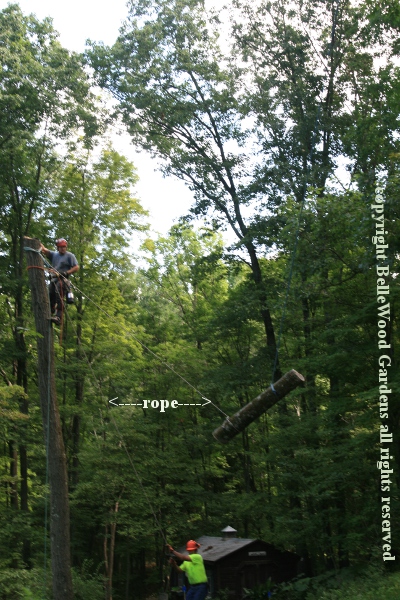
Larger pieces are also roped, and someone
guides it down using ropes and a pulley.
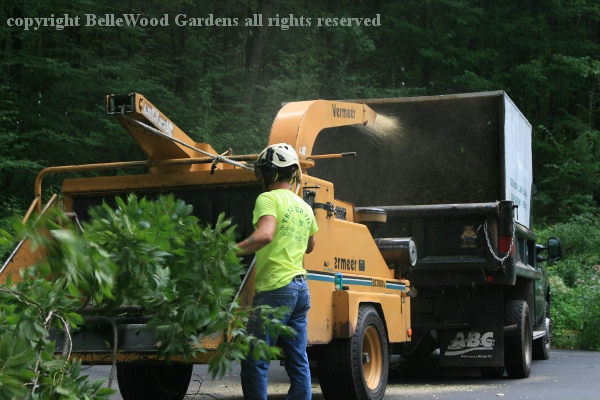
The chipper is so powerful that it shreds not merely twigs and branches but small logs that I would consider suitable for firewood. In the interests of time, it gets shredded. I become interested by the dohickey up top, to the left. It's a winch, a very powerful one that's part of a suitably large and heavy piece of machinery. Now, Paul has a winch, a 2,500 pound winch on his ATV. Which weighs 600 pounds. Down in the culvert ditch are massive logs left over from Superstorm Sandy. Paul could cable to one and start up the winch. With the likely result that the ATV would end up in the ditch with the logs. We have a discussion with Mike Grombir, come to an agreement, and for an additional fee the logs will be cut, winched, removed.
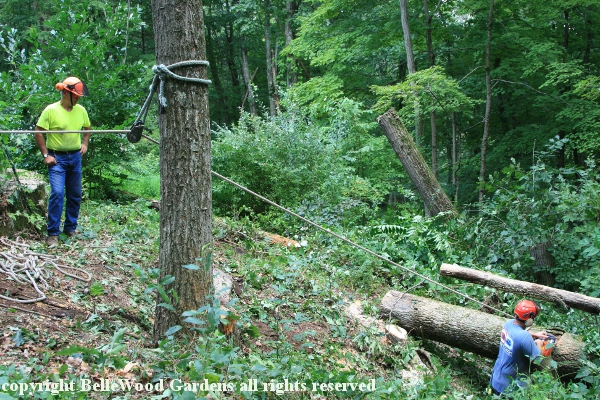
Kirk is the expert logger on this crew. He studies the situation, makes decisions. He'll temporarily leave a good section of tree trunk uncut to function as a sort of crane, stabilizing rope and pulley.
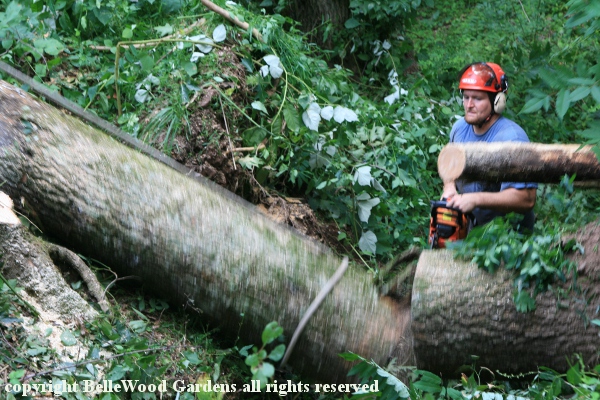
And the logs will be cut to lengths which make them maneuverable.
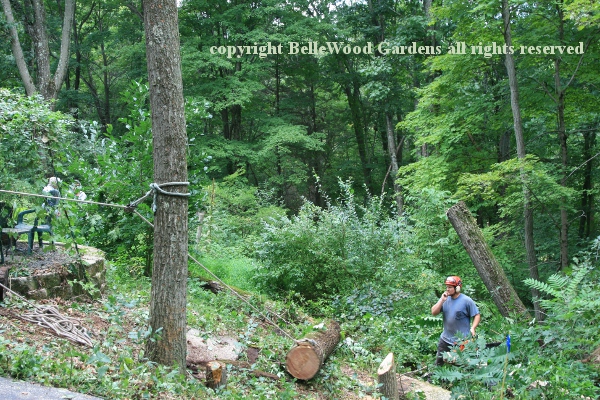
Up comes a log, out of the ditch.
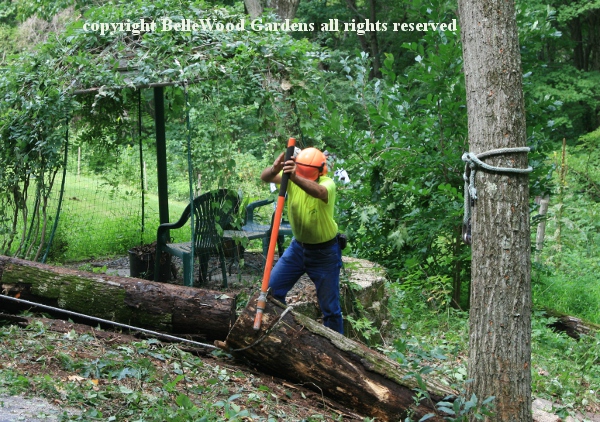
Cant hook shifts the log so it does not hang up
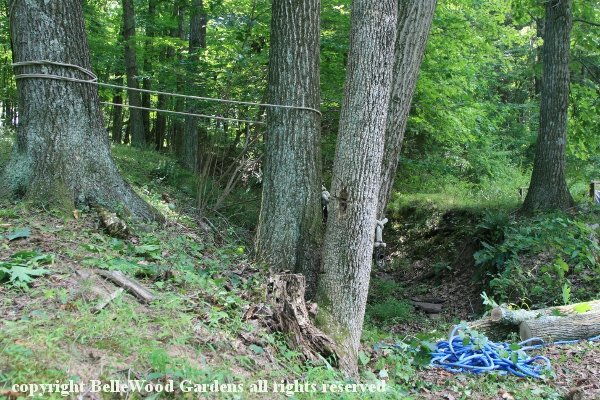
That out of the way, now it's time to take down a tree across the driveway.
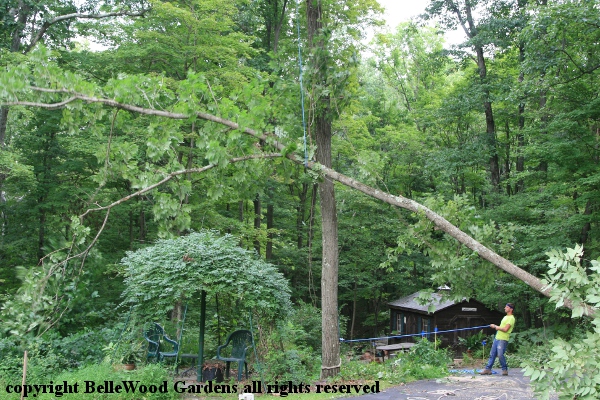
Rope and . . . . pivot
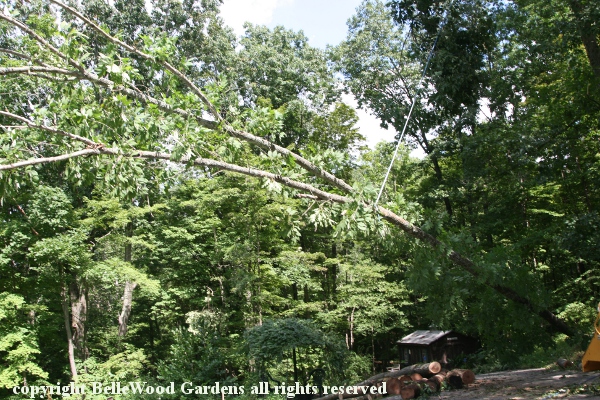
to smoothly control its descent.
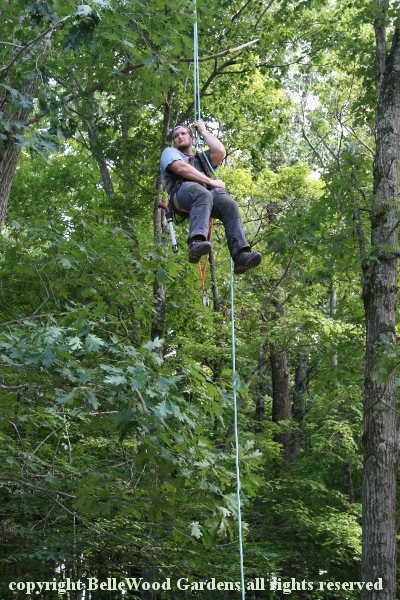
Another smooth descent from the treetops.
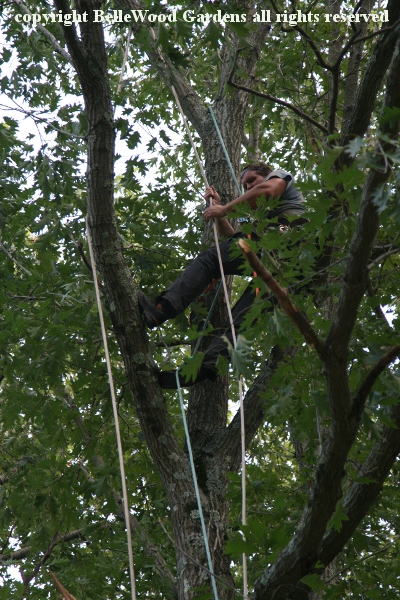
It's possible Kirk is as at home up in trees as he is on the ground.
Arboreal.
Definitely.
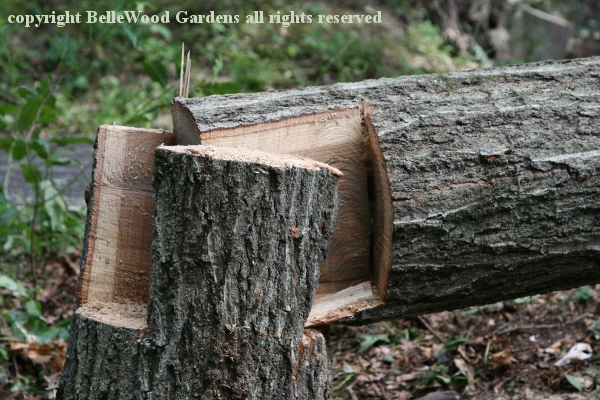
A fascinating felling cut. Kirk calls it a key hinge bore cut. Looks like a mortise and tenon in woodworking. Make the felling notch, to give it space to collapse down onto. Bore cut in the center at about the same height as the notch. Cut the two "ears," high up. Split it out for a very controled fall on a somewhat back-leaning tree. Beautiful, technically impressive technique.
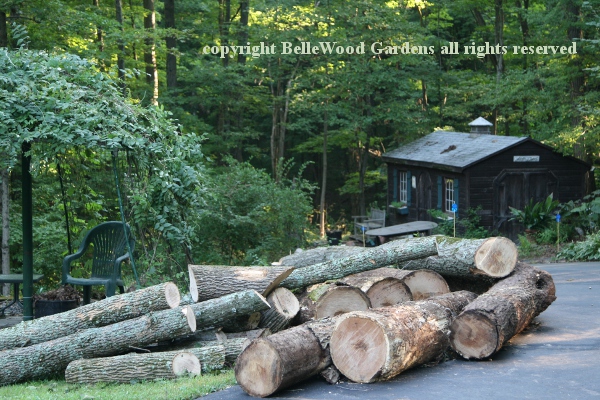
Log pile. Potential firewood. You know what they say - firewood heats you multiple times. First when it's cut. These logs need to be re-cut to length - 18 inches for our stove. Then moved over by the log splitter. Split into firewood. Moved to storage area. (We're having discussions about where to put it as there will be more firewood than storage.) Relocate into basement for imminent use. Then upstairs. Then - finally - burned for heating.
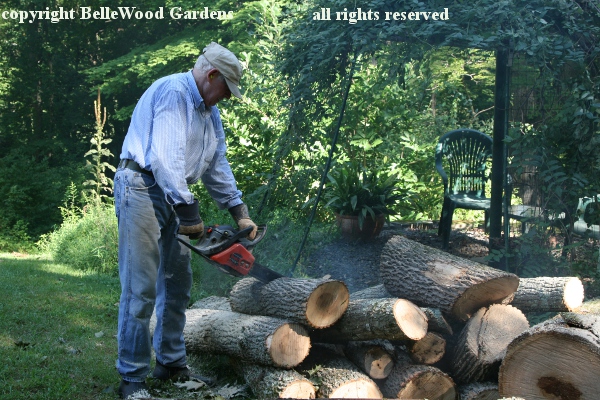
Day by day. It will be done before the snow flies.
Back to Top
Back to August 2016
Back to the main Diary Page